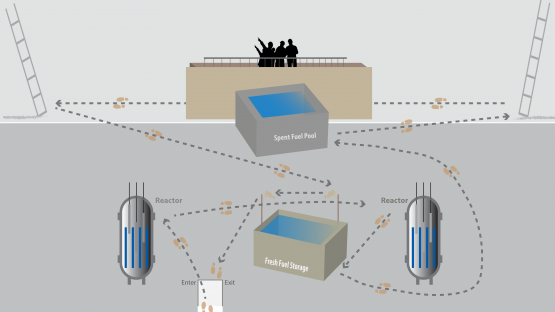An indoor positioning technology originally invented to help rescue firefighters will soon be put to use to help IAEA safeguards inspectors verify States’ legal commitment only to use nuclear material and facilities for peaceful purposes. The technology, currently under testing, will provide inspectors with a more effective and accurate way of documenting the information they collect during an inspection.
“Accurate documentation of verification activities is extremely important, especially as they support credible safeguards conclusions,” said Dimitri Finker, technology foresight specialist at the IAEA. The new technology will complement the existing use of GPS technology, which is unreliable inside buildings. “This is important because most verification activities take place indoors,” Finker said.
Although the IAEA’s prototype is still under development, inspectors involved in tests have found that the system is helping them to accurately document their inspection activities, Finker said. “Reviewing the location information and comparing it to notes, photographs and other information helps inspectors recall details of the inspection to compile accurate inspection reports.”
Inspectors spend long days inspecting several buildings and sites, and they are often under pressure to complete their work in a timely manner once they have returned to Vienna. “We want to provide inspectors with technological solutions that not only improve their efficiency in the field, but also streamline how they compile their report,” Finker said.
How the system works
A small, light-weight device worn around the ankle of the inspector, the new technology records information about the speed, direction of movement and orientation during verification activities. Software then helps the inspectors turn this raw data into an organized report, showing the exact location within the facility of their equipment readings, measurements, photographs, samples and notes.
Keeping pace with the evolution of technology
Technological progress continues to offer new opportunities and efficiency gains for the IAEA’s monitoring and verification work. “Improving inspection efficiency is a priority for the IAEA. We are aiming to do what we do today faster and better by improving the efficiencies in the inspectors’ workflow,” said Finker. “We are doing this by identifying technologies already under development or being used in other fields that address similar challenges faced in safeguards.”
This technology is developed in conjunction with the IAEA’s ongoing Modernization of the Safeguards Information Technology (MOSAIC) initiative.



